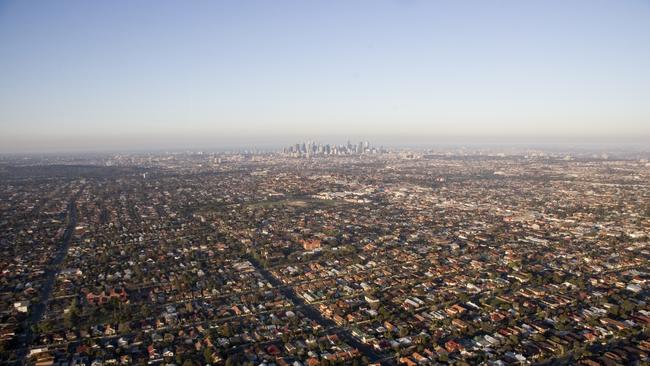Rates: Regional households and businesses pay twice city rates
Regional households will pay $2535 on average in rates on a $700,000 home this year, compared to $1099 in Melbourne. Search your council in our interactive list.

Regional Victorian households and businesses are paying more than twice as much in rates as their city counterparts on properties of the same value.
The owner of $700,000 home in Melbourne’s city of Knox will pay $1071 in rates this financial year, while Horsham residents with a property of the same value will pay $3133 and those in Swan Hill $3493.
Analysis of 16 regional and 13 metropolitan Melbourne councils’ 2022-23 budgets shows regional households will pay $2535 on average in rates on a $700,000 home, while those in Melbourne will pay just $1099.
Ararat Rural City Council chief executive Tim Harrison said what’s worse is that “up to four times more of a (regional) family’s income is going into rates” compared to those in Melbourne.
The Weekly Times analysis shows there is also an inequity for businesses, with a $4 million property in metropolitan Melbourne paying an average $8510 in rates, compared to a whopping $16,267 in regional Victoria.
Dr Harrison, who is an engineer with a doctorate in social policy, said it was time to end decades of bickering between farmers, households and businesses over who should share the greatest rate burden, and instead unite to reform “an inequitable system”.
He has put forward a radical new rating model that has gained the backing of the Victorian Farmers Federation, which would see Melbourne’s richest 19 councils lift their rates and tip the extra revenue into a pool that would be redistributed to all other councils.
“We (smaller rural councils) have small populations that are expected to maintain a huge amount infrastructure that secures food, water and energy for the rest of Victoria,” Dr Harrison said. “But city people aren’t paying for it.”
Under his model all Victorians would pay their rates based on a state average, for example 0.3 cents per $1 of their property’s value.
As it stands small rural councils, such as Buloke are charging households and businesses more than 0.6c per dollar of capital improved value on their properties, while Melbourne’s affluent Stonnington Council charges just 0.09c per dollar of CIV.
Equalising the CIV would mean doubling or tripling rates across Melbourne, Stonnington, Bayside, Port Phillip and 15 other of Victoria’s most affluent urban councils, where the bulk of the state’s property wealth is held.
Dr Harrison said the State Revenue Office would collect the extra rate revenue from the 19 city councils for distribution to the 60 others across the state.
“Although politically difficult, a move towards a state pool-based equalisation model is the only real mechanism for achieving rating equity between rural Victorians and the rest of the state,” he said
VFF president Emma Germano said the current rating system was broken.
“It forces rural councils to rely on small rate bases when they have little to no ability to generate additional income,” Ms Germano said.
“City councils are able to discount rates because they take additional income through things like parking fees and developer contributions.
“The VFF supports the concept of an equalised funding model for local government where the state sets a general rate for all property and redistributes funds collected from rates on the basis of equity and need.
“This would be a fundamental change to how Victoria’s rating system works, but we need governments to commit to big reform to ensure there is equity and fairness for everyone.”
But getting politicians on side will be difficult, given the Labor Andrews Government would baulk at cranking up rates in battleground inner city and suburban electorates where it is fighting the Greens and Liberals.
Liberal local government spokesman Richard Riordan said Victoria needed to work towards a more equitable model, given “the current system was unsustainable and unfair for hundreds of thousands of Victorians”.
“There needs to be a comprehensive review of the local government rating tax,” Mr Riordan said.
Mr Riordan said he supported all Victorians paying the same rates on properties of the same value, but that the transition to such a model would be difficult.
He said one potential model was for the State Revenue Office to collect rate revenue and redistribute the bulk of it to fund local council infrastructure and community services, with the rest going to councils.
Local Government Minister Melissa Horne failed to respond to requests for comment.




